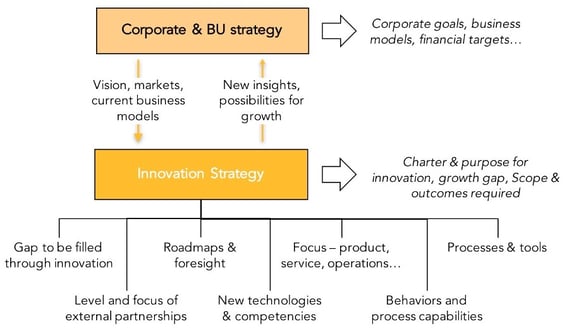
What you will read below is a collection of opinions and (hopefully) practical suggestions. If you're looking for referenced materials, I guess you should look elsewhere, but if you're interested in picking up some pointers or discovering something that makes you realize that you're treading in the footsteps of others, then I suggest that you read on.
NOTE: in some of the answers, I exaggerate for effect - that is deliberate. I wanted to create a contrast frame that would make you sit up and really think...

How does one innovate across different industries?
- Focus on the right questions - answers are generally easy - the point here is that attending to the framing of your question is more important to the impact of an innovation than focusing on the answers. Too often the opposite is what I find. Born out of a conviction of technical, business model or market superiority, organizations tend to focus on more and better answers to the same or similar questions, only to get caught by someone who asks a different question and disrupts the status quo. Shifting to 'questions' releases you, at least initially, from the current framing that your organization provides, and enables you to think about customers and new trends. Obviously, one can take this to an extreme, and the emphasis here is to SHIFT FRAMES - this is a common denominator for the origins of many breakthrough innovations
- Understand, at the most general level, common issues that affect many businesses. The example posed here was "what do railways, air-conditioning manufacturers and healthcare have in common..." There may well be several answers that question, but the one that I gave was "the shift from planned to condition-based maintenance" (note: in healthcare, it's not called maintenance). This common thread means that these industries can learn from each other. They can learn key questions to ask, general approaches to answers, platform technologies that are generally relevant, and (especially important these days) new business model formats and metrics.

You don't have to be the best, just be "good enough"
- A common mistake is to benchmark the best in terms of what they do (mechanics) and assume that you can simply copy those mechanics across to your organization. Whether the benchmarking is drawn from an HBR article, a book, and independent study, or just an aspiration to be 'innovative like XXX' (for XXX, insert Apple, Google, P&G, or whomever the current innovation 'heroes' might be)
- The point is that to make something work in your organization, you need to understand what works (from multiple places), how it works (or a cunning variant of that - how to work it), and more importantly, why it works. At that point you will be able to convert that into principle/policy/practice that is aligned with a future vision for innovation in your organization. Living in America, and having a son that plays college rugby, I am stunned/amused by the preoccupation that young US rugby players have with emulating the All Blacks. They look at the mechanics and omit to understand how and why those tactics work for the All Blacks and are a recipe for disaster for an inexperienced college team. Whatever your sport, the lesson is the same - it is OK to aspire to greatness but copying without thought to capacity or capability is likely to end badly. The same is true for innovation.

How do you improve the adoption of a technology/innovation strategy/roadmap by an executive team?
- First of all, understand the inputs that the executive team require. What do they need in order to make decisions? That means that you need to let go of all the detailed analysis and format your results/thinking in a way that they can easily digest and execute
- Secondly, realize executive teams rarely adopt a technology strategy/roadmap, they are much more interested in adopting the CONSEQUENCES of a technology strategy/roadmap
- Thirdly, Eisenhower said "plans are nothing, planning is everything". Therefore, the process of developing a technology or innovation strategy/roadmapping (select as applicable) should engage people across the organization. This goes beyond simple stakeholder management and moves into gaining support and involvement in the development of the conclusions of the work. Too often the results of the strategy/roadmap emerge from R&D and into the light of day without this prior engagement - getting adoption is suddenly a lot harder.
- Fourthly, such plans/strategies/roadmaps should deliver results with an appropriate cadence. Making people wait 5 years for the first measurable results is always going to cause problems. Look to include early wins in order to give people confidence that the process is working as expected

What are prevalent factors hindering innovation?
- Benchmarking by focusing on the 'what' (mechanics), to the exclusion of the 'why' and the 'how' is a common mistake
- Focus on volume - well, that is bound to cause some surprises as there is a lot written about 'focus on volume'. I would say that volume of ideas is an indicator of activity, it doesn't really speak to quality or impact of the ideas. Sure, engagement is important and a commensurate uptick in new ideas really helps, but to focus on volume alone misses the point...
- High quality innovation is an emergent property of a well-designed innovation program/process, there aren't the defined 'cause and effect' relationships that many would like to believe exists
- Creating a structural solution to a process problem. Cue the formation of the 'Innovation Group' - those tasked with creating and delivering innovation for everyone else
- ...one more thing...COMPENSATION - especially executive compensation. Innovation suffers hugely at the hands of the mantra of 'make the numbers for this quarter - so I can get my bonus/options/not get fired', amongst other KPI issues

What are the pain points for establishing a corporate innovation strategy?
Common problems relate to an obsession that anything with 'strategy' in it means many, many pages of slides and huge amounts of analysis. An innovation strategy, plain and simple, should address the role that innovation should have in delivering the strategy of the business. That should be describable on one sheet of paper - if you're a succinct writer.
Often, what makes drafting this document so challenging is, amongst other things:
- The need to commit to (possibly new) KPIs
- Requirement to make definitive choices, usually based on insufficient information...
- Insufficient, that is, compared to the business cases that are prepared for 'business as usual' investment plans
- Preoccupation with the complex ("because it's innovation"), rather than keeping it simple
For more on innovation strategy, please visit https://www.linkedin.com/pulse/innovation-elementary-my-dear-watson-peter-allen/